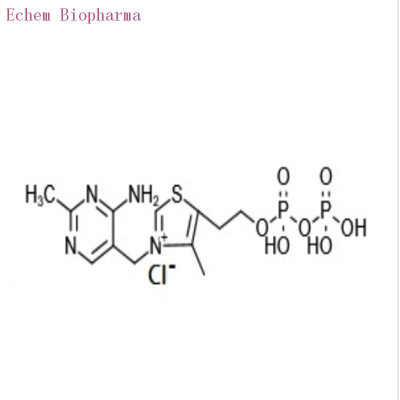-
Categories
-
Pharmaceutical Intermediates
-
Active Pharmaceutical Ingredients
-
Food Additives
- Industrial Coatings
- Agrochemicals
- Dyes and Pigments
- Surfactant
- Flavors and Fragrances
- Chemical Reagents
- Catalyst and Auxiliary
- Natural Products
- Inorganic Chemistry
-
Organic Chemistry
-
Biochemical Engineering
- Analytical Chemistry
- Cosmetic Ingredient
-
Pharmaceutical Intermediates
Promotion
ECHEMI Mall
Wholesale
Weekly Price
Exhibition
News
-
Trade Service
| Scientists reveal important mechanisms by which fruit flies recognize viral infections |
The Jean Luc Imler/Cai Hua team of Guangzhou Hoffman Institute of Immunology, Guangzhou Medical University and Professor Rune Hartmann of Aarhus University in Denmark have made an important breakthrough in the field of antiviral research in fruit flies: revealing an important mechanism for fruit flies to recognize viral infections
.
Related research was published online in Nature on July 15th, Beijing time
The number of insects accounts for 65% of the existing animal species on the earth
.
There are many types of viruses that infect insects, but it is not clear whether there is a type of pattern recognition receptor in insects that recognizes virus infection and induces inducible broad-spectrum antiviral
Three years ago, Jean Luc Imler and others discovered that there is an inducible antiviral signaling pathway mediated by the STING molecule that is conserved with humans in Drosophila; last year, Dr.
Cai Hua and others further discovered that artificial injection of cyclic dinucleotide 2'3'- cGAMP to Drosophila can induce a broad-spectrum STING-dependent antiviral effect, changing the previous understanding that RNA interference is the only broad-spectrum antiviral mechanism in insects
.
"Two studies suggest that there may be a human (mammalian) cGAS receptor molecule in Drosophila, which can directly recognize viral infection and then produce a second messenger similar to 2'3'-cGAMP, thereby activating STING-dependent resistance.
Viral signaling pathway
.
" Cai Hua said
In order to find the key receptors upstream of STING to identify viral infections, the researchers used Drosophila genetic screening, biochemistry, immunology and other methods to identify two cGAS-like molecules in Drosophila, named cGLR1 and cGLR2
.
Gain of function experiment showed that fruit flies overexpressing cGLR1 or cGLR2 are more resistant to virus infection
On the same day, "Nature" also published the results of another study conducted by Harvard Medical School professor Philip J.
Kranzusch and Jean-Luc Imler/Cai Hua team
.
The study used biochemical screening to identify the existence of human cGAS-like receptor cGLR1 in Drosophila
Surprisingly, cGLR1 in Drosophila does not recognize DNA but viral RNA, and cGLR1 can produce 3'2'-cGAMP after recognizing viral RNA
.
These characteristics are different from human cGAS, which produces 2'3'-cGAMP after recognizing viral DNA
"The two articles completely revealed the mechanism of how the cGLR1/2-cGAMP-STING signaling pathway in Drosophila recognizes and regulates viral infections, and solves the problem of scientists' long-term understanding of how insects recognize viral infections and induce inducible broad-spectrum antiviral mechanisms.
One problem is perplexed
.
" Cai Hua said
This achievement is an important breakthrough obtained by using Drosophila as a model organism as a research object
.
Drosophila has made important contributions in the field of basic research in life sciences and even medicine, and at the same time, it will continue to play an important role in biomedical research
The Guangzhou Hoffman Institute of Immunology was established by the Guangzhou Medical University and the French National Research Center CNRS under the initiative of the Guangdong Provincial and Guangzhou Municipal Governments
.
The goal is to establish an international high-level innate immunity research institution in China at Guangzhou Medical University through in-depth cooperation with Professor Jules A.
Hoffmann and his team
.
The Institute is a national base for subject innovation and intelligence introduction (111 base) for the study of natural immune mechanism in colleges and universities
.
Currently researching all 7 subject groups (planned scale of 10-15 subject groups), undertaking a series of scientific research projects in Guangdong Province and Guangzhou City, the key research and development plan of the Ministry of Science and Technology, the National Natural Science Foundation of China
.
Related paper information: https://doi.
org/10.
1038/s41586-021-03743-5
org/10.
1038/s41586-021-03743-5







